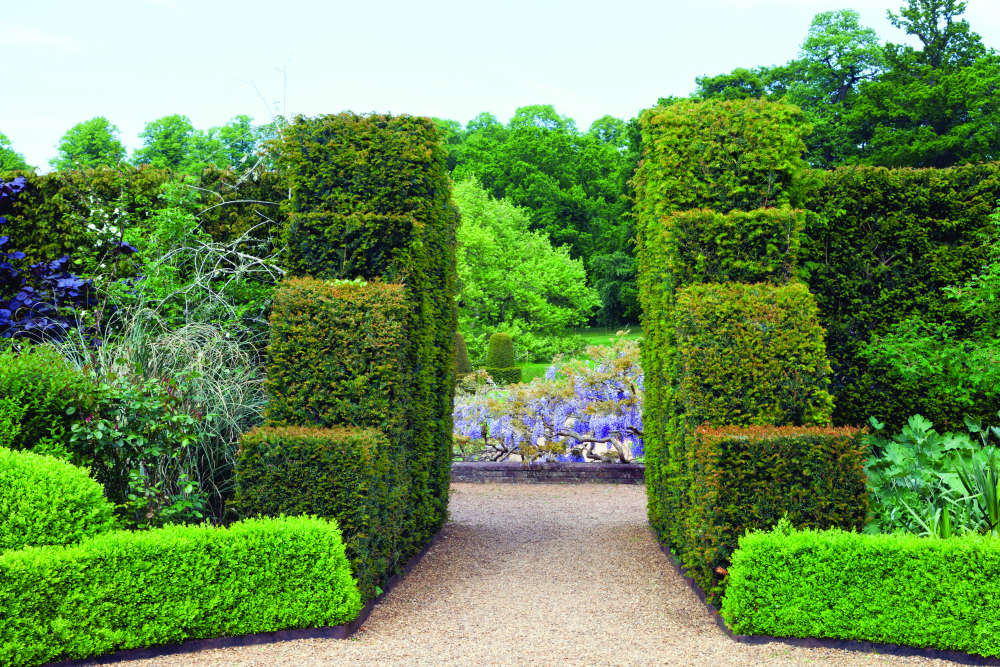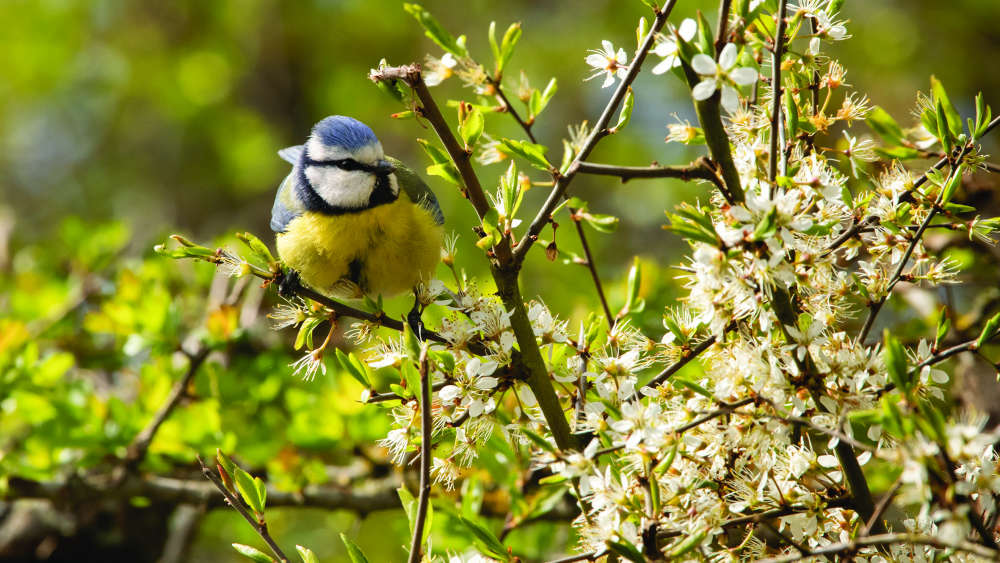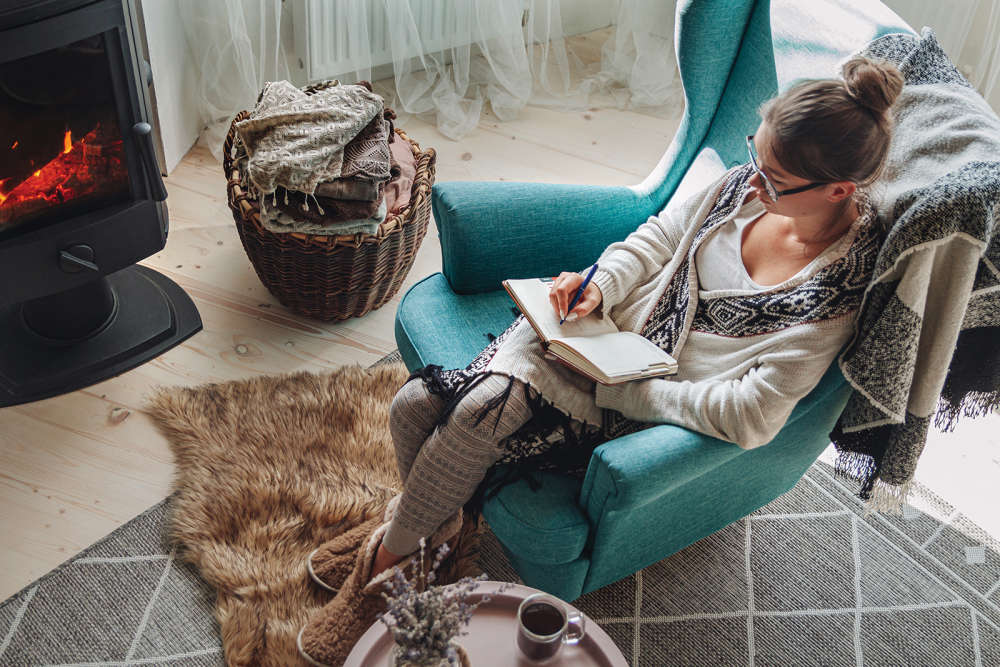
Gardeners are a flower-obsessed lot, greedily seeking out the latest, brightest blooms. That’s all very well, but ephemeral flowers need a stage to perform on. Plant a hedge - they add structure, benefit wildlife and look good all year round.
A successful hedge starts with careful planning; what type of hedge do you desire and is it appropriate for the location? If forming a shared boundary, chat with your neighbours. Remember, they’ll have to live with the hedge too. Avoid planting hard against a boundary - allow space for plants to grow without encroaching onto neighbouring property.
Small, juvenile plants are preferable to large ones as they are easier to handle, grow quickly and will save you money! Some hedging plants are advertised as ‘bare-rooted’, meaning they’ve been grown in open fields, then dug up and supplied to order during dormancy, typically October - January. This sounds brutal, but field-grown plants are tough and will burst into life in spring. To avoid dehydration, they require planting immediately upon receipt. Pot-grown plants are an expensive, but convenient option. They’re happy to wait in their pots until you are ready and can be planted at any time of year.
Nothing says ‘timeless class’ more than a neatly-manicured yew hedge. Yew, (Taxus) looks especially magical when dusted with frost and is the undisputed king of the topiary world; its dense, sombre foliage lends itself to the most intricate designs. A long-held gardening myth states yew is slow-growing. Wrong. Given decent conditions, yew grows rapidly when young, then obligingly slows down into comfy middle age - ideal credentials for topiary. Yew also copes with deep shade where other plants struggle.
Box, (Buxus), once prevalent in millions of gardens, has been hit by the double-whammy of Box Blight and Box Moth Caterpillar. Many despairing gardeners have thrown in the trowel, (apologies) and ripped out their box hedges. There are ways to control these problems, although constant vigilance is required - you just have to ask yourself how much you like box. For me, it’s a plant I wouldn’t be without, so I persevere with a treatment regime. Happily, there are some lookalike plants that are not affected by box ailments. Ilex crenata bears the closest resemblance. This small-leaved member of the holly family produces rounded, (non-prickly!) foliage in several varieties, including golden forms.

‘Tapestry’ hedges, comprising mixed evergreens, need time to ‘stitch’ together, require generous space to grow to full effect and will never attain the super-neat lines of a single species planting. However, they give year-round visual interest as different patches of foliage appear to intensify or recede, depending on the ever-changing light. If you have space - and patience, a tapestry hedge could be for you.
Beech and hornbeam hedges turn a pleasing russet-brown in autumn. Trembling and rustling in the slightest breeze; their old leaves stoically hang on until spring. Hornbeam is a particularly tough personality and will cope with winter-wet soils.
The variegated evergreen foliage of euonymus or elaeagnus adds year-round brightness. Photinia offers a long season of interest; scarlet-coloured new leaves in spring followed by summertime flowers and autumn berries. When it comes to berries, pyracantha reigns supreme, with a head-to-toe covering of fruits in bonfire shades of red, orange or yellow. Birds adore pyracantha berries, although they prefer red-coloured ones and always munch those first! Pyracantha is a thorny character - ideal for a security hedge.
Leylandii – is there a more controversial plant? I’ll spring to its defence and say it’s only doing what comes naturally. It’s a member of the cypress family of trees, noted for their ability to quickly attain height and bulk, so don’t be surprised if your leylandii hedge grows a metre per year. Leylandii makes a magnificent specimen tree in park/forest settings. However, in a domestic garden, better hedging candidates are available.
A natural-style planting of hedgerow beauties such as hawthorn, (Crataegus), hazel, (Corylus) and varieties of wild rose, (Rosa) will provide a valuable larder for wildlife. If space allows, include a couple of small trees. Cherry-plum, (Prunus cerasifera) drips with delicious fruit in autumn, offering a feast for both humans and animals. Rowan trees, (Sorbus) produce pollen-rich flowers in spring and vivid autumn berries. In olden times, rowan was planted as a witch-repellent. Well, you never know…
Sometimes a fence may be more practical than a hedge, but don’t assume it’s a cheaper option - fences are expensive to install and require regular maintenance. They can be made more wildlife-friendly by attaching a trellis for climbing plants. Honeysuckle provides gorgeously scented flowers beloved by butterflies, moths and bees and nutrient-rich berries. Its twisting stems create excellent hide-aways - some creatures use honeysuckle’s soft leaves and bark as nesting material. Clematis and climbing roses are also good choices, but select varieties carefully as some can be extremely vigorous.
Free movement is essential for wildlife. Animals roam far more than we realise - hedgehogs can ramble for a mile every night! Hedges naturally offer gaps for animals to push through. If erecting a solid boundary, creating several ‘pop-holes’, (approx. 15 x 15cms) at the base will ensure access routes for wildlife. Pop-holes are also potential escape opportunities for small pets, so inform any pet-owning neighbours.
According to the Office for National Statistics, the three largest areas of non-wild, developed land in the UK can be categorised as (1): agricultural, (2): forestry/open water, (reservoirs, etc) and (3): domestic gardens. Most of us have modest-sized plots and it’s easy to assume our individual actions have no national impact, but this is simply not the case. Collectively-speaking, gardeners are the UK’s largest landowners. With a little thoughtfulness and joined-up community thinking we can do much to improve the lot for wildlife.

 Blooming Times: Harbingers of Spring
Blooming Times: Harbingers of Spring
 Homes Extra: Home Sanctuary
Homes Extra: Home Sanctuary
 Home Style: Ancient & Modern
Home Style: Ancient & Modern
 Blooming Times: Happy Faces
Blooming Times: Happy Faces
 Blooming Times: Winter Sparklers
Blooming Times: Winter Sparklers
 Homes Extra: Restore, Repair, Recycle
Homes Extra: Restore, Repair, Recycle
 Home Style: A Scandi Winter's Tale
Home Style: A Scandi Winter's Tale
 Blooming Times: Winter Wonders
Blooming Times: Winter Wonders
 Home Style: Bold, Brave & Beautiful
Home Style: Bold, Brave & Beautiful
 Blooming Times: The Answer Lies in the Soil
Blooming Times: The Answer Lies in the Soil
 Blooming Times: Heavenly Hyacinths
Blooming Times: Heavenly Hyacinths
 Legendary Builds with Phoenix Construction Services
Legendary Builds with Phoenix Construction Services
 Blooming Times: Know Your Enemy
Blooming Times: Know Your Enemy
 Bespoke Dreams from Eridge Green Kitchens
Bespoke Dreams from Eridge Green Kitchens
 10 Hot Years: iFit Fires & Flues
10 Hot Years: iFit Fires & Flues
 Home Style: Bold Type
Home Style: Bold Type
 Blooming Times: The Sky's the Limit
Blooming Times: The Sky's the Limit
 Home Style: A Better Way of Life
Home Style: A Better Way of Life
 Homes Extra: Shed Space
Homes Extra: Shed Space
 Blooming Times: Top of the Pots
Blooming Times: Top of the Pots